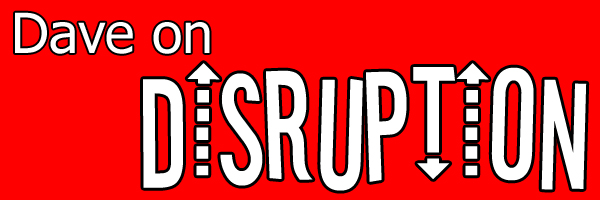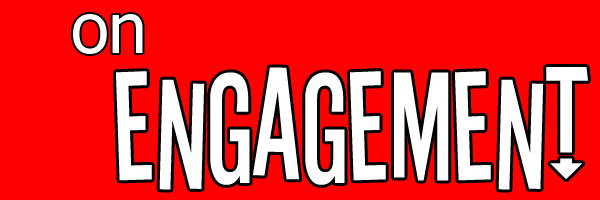
Recently, I had a run in with DISRUPTION.
I know that’s nothing new. We all have to run into disruption (at least once or twice a day), it is part of who we are. Disruption is part of life. Without disruption how could we ever differentiate between what is urgent, what is important, what is not urgent and what is not important. We need disruption to give us perspective when we need and when we don’t.
Defining Disruption
I see Disruption as to go away from the norm. To move away from what is the everyday, the understood, the expected, basically move away in any and all angles of approach & departure. Does that make sense? If not, please let me clarify. Think of disruption as a succession of four way stops and no matter which turn you take (if any) it will take you to your final destination.
Positive Disruption
Yes, disruption always has a certain degree of positivity. Of course, the amount of positive disruption varies as each situation is unique. What I mean is when disruption occurs you are not define by the action of the disruption but by what you do after. How you approach and handle the disruption will determine the amount of positivity the disruption gives you.
Isn’t Disruption supposed to be something we dread or fear?
Yes and no. Yes, in that once you get into your groove and things are moving along at a constant suitable space why would it be good to disturb or disrupt? It is not. It means that it is now time to slow down and then gradually get back up to speed. Disruption should not be dreaded or feared in that it should be expected. When you expect something to happen you have a mindset of anticipation. Anticipation in that you know how you will react to the disruption and that’s a good thing. There will be times that others will, in response to disruption, get cold feet for fear of doing the wrong thing will react negatively or not at all and that’s not a good thing.
Disruption is necessary?
Most certainly, disruption is necessary. It is necessary when it creates a challenge and that creates or leads to change. Change, whether good or bad is still change and change is part of growth. Whether the outcome is not what is desired, it does give you the opportunity to turn things around move away from what you have known or just learned (the bad outcome) and into the unknown based on you have already left the bad behind. You could almost call disruption a checkpoint on the road to success.
Is disruption not a good strategy?
Any strategy or tactic should include anticipated and expected disruption. The need to deal with disruption as part of the plan is critical to the success of the plan. Did you know, in training Infantrymen, the US Army teaches how to deal with and fight through an ambush. Trust me, when I tell you an ambush (deliberate or hasty) is a disruption no Infantryman wants but does expect because they have been trained, since basic training on how to deal with it. It is when you ignore the fact that disruption (at any level or intensity) will occur that you have given up. That’s right you have given up long before you can implement any strategy or tactic.
How can disruption change the routine or status quo thinking/mindset?
It all depends on what the benefit or perceived benefit is for the individual(s) affected by the disruption. Disruption is a good thing so long as there is something positive for those affected by the disruption people will conform or at least, adapt. For example, there was a needed I needed extra help in a projected and asked for volunteers. As anyone who has ever worked for other people knows never to volunteer for anything. That’s OK, it was the first rule I learned when I joined the Army. So I understood that no one was going to outright volunteer for anything. I asked one more time and the new guy (in the organization) stepped up and volunteered. I told him to go home, he got a paid day off. Everyone else was “volunteered”. Needless to say, the next time I asked for a volunteer, everyone raised their hand.
I first learned about this tactic to getting people to volunteer especially when no one wants to volunteer when I was in the Army. Though I was not the one who was given the day off, I did promise myself that if I am ever in a situation where getting people to volunteer is difficult, I would try the tactic I mentioned. I remembered this disruptive idea from so many years ago for the same reason people remember things that appeal to them because it creates change in the way they do business or live or learn for better or worse.
What about the naysayers?
Getting naysayers to buy into your disruptive idea(s) is always going to be an up hill climb or swimming up the creek without a paddler or (insert cheese cliche about struggle here). But, the best way to win over the naysayers is to show them and not just tell them how the idea(s), the disruptive idea or concept, will be good for them. Do not gloss over the idea but be specific. Do what you need to do to connect at a personal level and you got it
Remember, to be disruptive, one must be willing to dare to be Disruptive! You have no choice, if you want to succeed when disruption comes to town, either through your hand or at the hands of others you must disruptive. Yet, be positively disruptive. To be positively disruptive you must POSITIVELY BE DISRUPTIVE!
Thank you
David Guerra
Save
Save
Save

